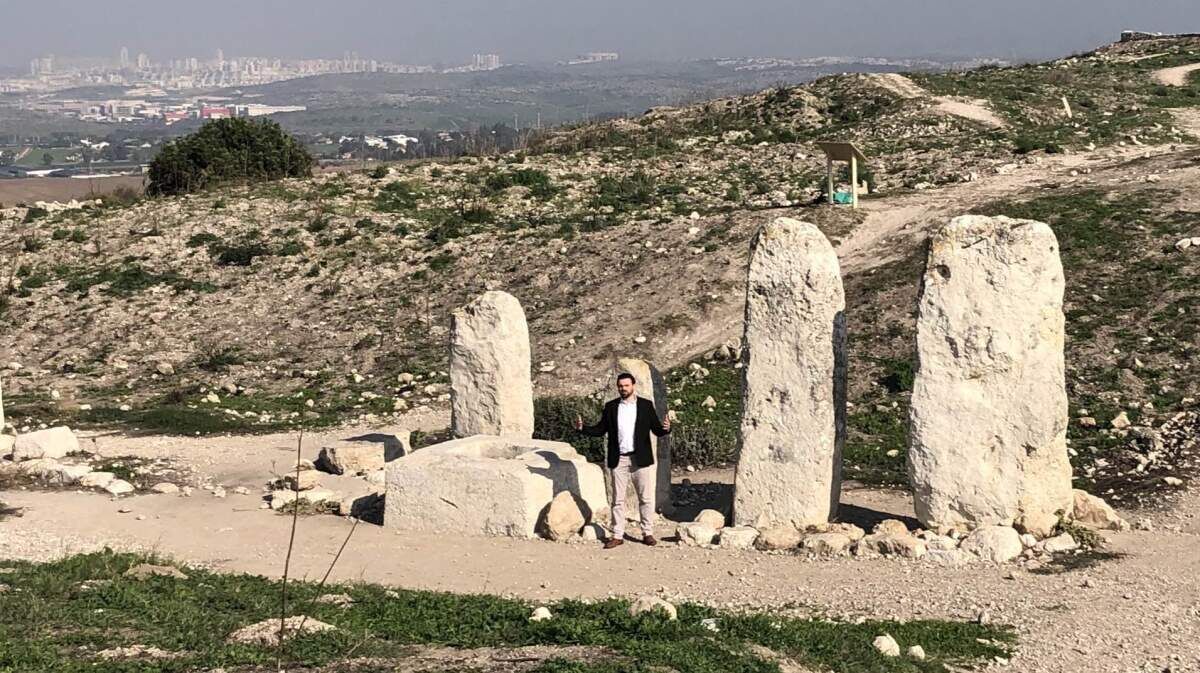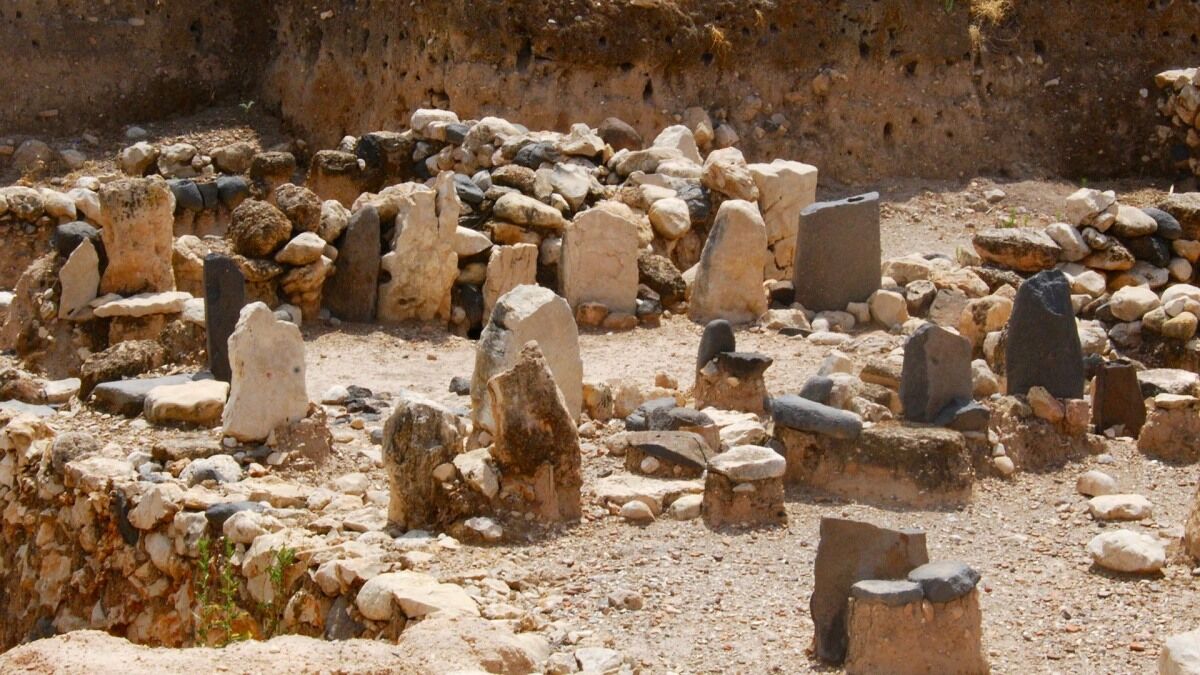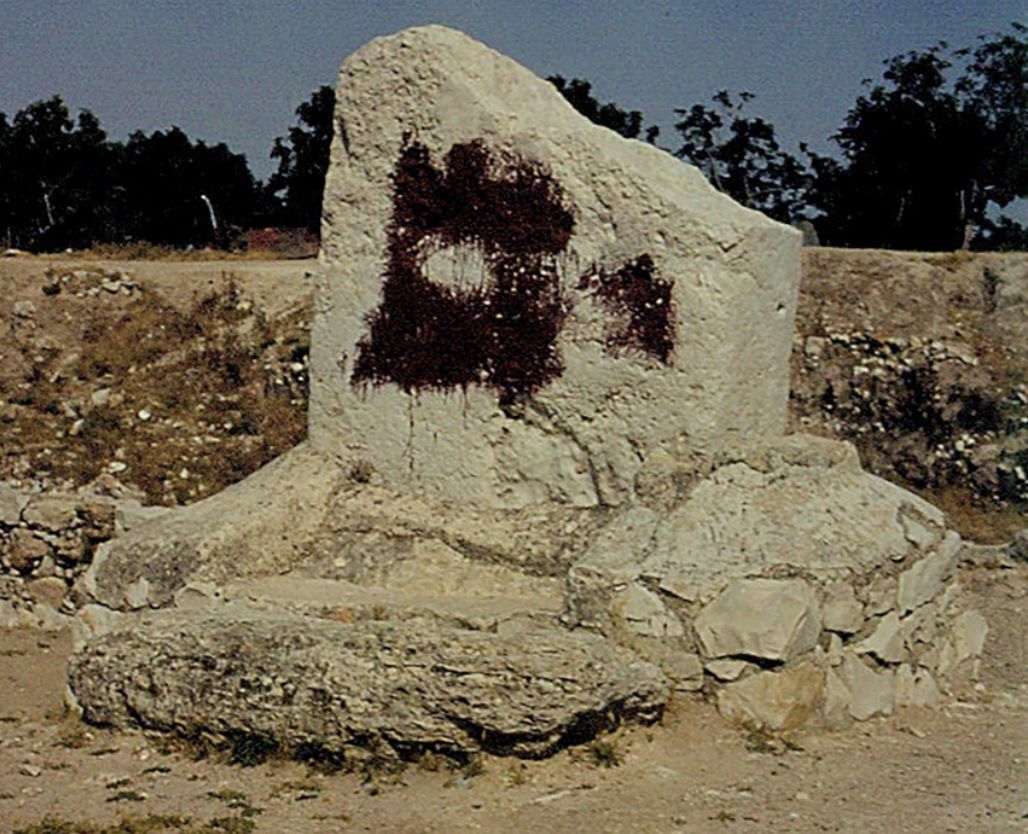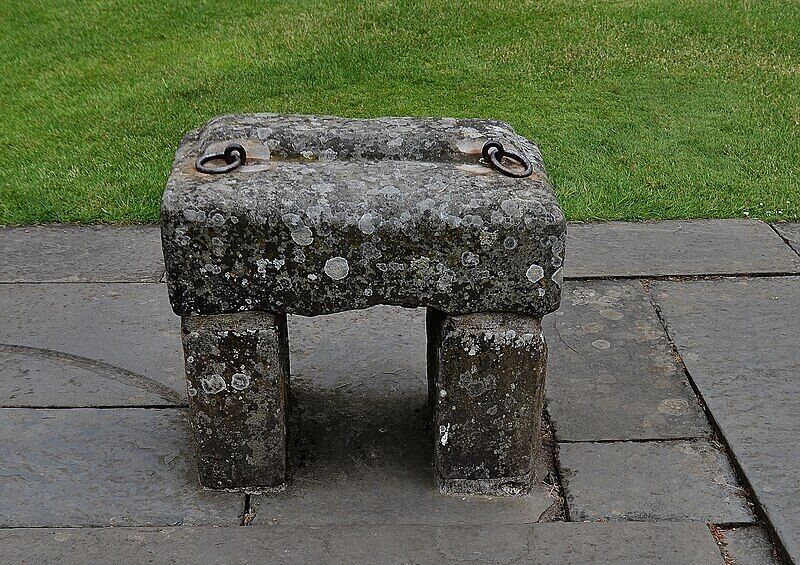The Sacred Standing Stones of Israel
Amidst the verdant hills of southern England, colossal stones jut vertically from the soil in praise of a deity. The site is called Stonehenge, and 1 million people visit it every year. Neolithic Britons, however, were not the only ancient people to hoist massive stones on their ends as objects of worship. Nor are the British Isles the only place where such sites are found. From Egypt to Easter Island, from India to Israel, humans throughout antiquity have set up stones as a form of worship.
The Hebrew Bible documents the erection of stones and stone structures as a form of religious devotion. The Hebrew word for a standing stone is matzevah (הבצמ; plural: matzevot; often transliterated massebah and masseboth). In the Bible, matzevot are both objects of lawful practice as well as pagan worship. Even today, some of these stone henges of Israel remain standing.
What has archaeology uncovered about Israel’s sacred standing stones? And how well does that archaeology align with the biblical text?
What Exactly Is a Matzevah?
“Typically, it [a matzevah] is an elongated stone with a rounded top, which was placed on its narrow side. In most cases, a natural stone was chosen for this purpose, and it typically bears no signs of intentional shaping, or only minimal ones,” Hebrew University professor Yosef Garfinkel writes in Khirbet Qeiyafa, Vol. 4, Excavation Report.
This description is reminiscent of the command by Moses to build an altar in the Promised Land: “And there shalt thou build an altar unto the Lord thy God, an altar of stones; thou shalt lift up no iron tool upon them. Thou shalt build the altar of the Lord thy God of unhewn stones …” (Deuteronomy 27:5-6). Though this command of Moses had nothing to do with matzevot, it shows that not shaping stones was an architectural cultic practice of the time period in which Moses lived.
These altar stones were not idols though, unlike most matzevot, which were usually erected to represent a deity or the abode of the deity. There are examples of matzevot being used to commemorate an oath, covenant or event, functioning as monuments rather than idols. “The precise meaning of masseboth is controversial,” wrote Prof. Uzi Avner. Scholars debate “whether they represented deities or had other functions” (“Masseboth Sites in the Negev and Sinai and Their Significance”). Rather than generalize and say that all matzevot are idols (or monuments), each must be judged by its archaeological and textual context.
It is noteworthy that the majority of standing stones are decorated, except for those discovered in Israel, which are almost always unembellished. “Standing stones found in Israel and the immediately surrounding area are almost always plain stones. This ‘plain stone tradition’ has long been identified by scholars as connected with the biblical prohibition against iconism (images) of any kind,” wrote archaeologist Doron Ben-Ami (“Mysterious Standing Stones”). Interestingly, the matzevot of pre-conquest Canaan are also bare. “The plain stones appear in Palestine, however, even before the emergence of Israel; it seems there was already a tradition of avoiding figures or even inscriptions” (ibid).
While scholars still debate the exact purpose of matzevot, their ubiquity is unquestioned. “This variety of locations and uses clearly indicates that a standing stone was indeed an integral part of the cult and religion of the ancient Near East,” Garfinkel writes. “It was easily adapted to various needs and became one of the most popular cultic paraphernalia of the region. Its widespread success is probably due to its simplicity: Any elongated stone could become a massebah if it was placed on its narrow side” (op cit).
A survey of some of Israel’s matzevot shows they served several purposes.
Canaanite Matzevot
Matzevot were especially prevalent in the land of Canaan before the Israelite conquest. Professor Avner noted that matzevot originated in the Sinai and Judean deserts, but later became commonplace in the highlands of Canaan: “[T]he masseboth were very rare until the third millennium b.c.e. and only during the second millennium did they become really common, but they never reached the numbers of the desert” (op cit).
Canaanite matzevot have been discovered in Middle Bronze Age temples at Shechem, Byblos, Megiddo, Tel Kitan, Tel el-Hayyat, Gezer, Hazor and other sites.
Archaeology shows that Gezer was a well-developed city filled with objects of pagan worship prior to Israel’s conquest. In the center of Canaanite Gezer is a large ritual area with 10 massive standing stones arranged in a line. The tallest is 3.2 meters (10.5 feet). A large carved stone basin sat in the middle of the row of stones. Scholars speculate that these stones and basin were used for religious rites. Some believe they were a symbol of Gezer’s union with 10 other regional city-states.

Joshua 11:10 identifies Hazor as the head of all of the Canaanite kingdoms. This city, built at the beginning of the Middle Bronze Age, also had a massive temple. In that temple’s final phase, on its western side, there are about 30 standing stones set in four rows. The stones had no writing or decorations, but they did have flat stones at their bases, which likely served as offering tables. These stones were eventually covered with fill in the Late Bronze Age. Above that fill, archaeologists have uncovered two bases for what would have been large pillars at the entrance to the complex.
Professor Garfinkel also found a matzevah in secondary use within the gate structure at Khirbet Qeiyafa, a unique, single-layer Iron Age site. The origin of this matzevah is unknown, but it predates the Israelites who built the city. This stone had no inscription, and yet was found tucked within another construction and upside down, as if it were intentionally desecrated.
A similar discovery was made at Beersheba. A large altar of finely carved ashlar stones had been built in Beersheba. Archaeologists discovered these matching stones used in other reconstruction efforts at the site, including in a public storage building at Stratum ii of Iron Age ii (eighth century b.c.e.). Other stones were found outside the city wall. Dr. Ziony Zevit wrote of the stones, “I assume that the stones were desacralized prior to the alterations made during Stratum ii …. It is possible that the altar formed by these stones may have been desacralized and dumped during the period represented by Stratum iii.” Stratum iii is believed to date to the ninth century—well within the Israelite period. These desacralizing efforts were performed by Israelites.
This method of desacralizing objects has also been found in other kingdoms, like Egypt. It was a common way to reuse the stones of heretical cults. “Both Khirbet Qeiyafa and Beersheba present the same pattern—a dismantled cultic object is found concealed in the walls of a building near the city gate,” wrote Garfinkel. “Both buildings seem to have had a public or official function. The biblical tradition presents numerous cases of desacralizing cultic paraphernalia or cultic places.”
By the Iron Age ii (10th century b.c.e.), when Khirbet Qeiyafa was built, it appears that some of the Canaanite matzevot were being mistreated, even vandalized, by the area’s new inhabitants: the Israelites. Why would Israel dislike Canaan’s matzevot? After all, the biblical text clearly shows Israel using matzevot.

Biblical Matzevot Laws
Worshiping a rock would clearly violate the Second Commandment, which prohibits idolatry. Mosaic law expressly forbade Israelites from establishing physical objects as representations of spiritual entities. Moses issued specific commands about the destruction of matzevot in Canaan: “Thou shalt not bow down to their gods, nor serve them, nor do after their doings; but thou shalt utterly overthrow them, and break in pieces their pillars [matzevot]” (Exodus 23:24). The same command is issued in Exodus 34:13, Deuteronomy 7:5 and 12:3. The Israelites were also commanded not to raise such matzevot (Leviticus 26:1; Deuteronomy 16:22). These pillars were idols, and they were not tolerated in the biblical Israelite religion.
But the Bible shows that there were evidently other functions for matzevot. Otherwise, Moses would have been a hypocrite, since he erected matzevot: “And Moses wrote all the words of the Lord, and rose up early in the morning, and builded an altar under the mount, and twelve pillars [matzevot], according to the twelve tribes of Israel” (Exodus 24:4).
Joshua, who the Bible says meticulously followed the laws of Moses, set up 12 stones as a monument to future generations of the miracle that had allowed Israel to cross the Jordan River (Joshua 4:3-9). There is no evidence that these stones were condemned by either God or the biblical authors. What was the distinction?
The biblical text does not condemn matzevot that are set up to commemorate an oath or special event. For instance, the Bible records Israel’s namesake (the patriarch Jacob) anointing a matzevah. As Jacob traveled from Beersheba to his ancestral lands of Haran, he camped outdoors and used a stone for a pillow. During the night he had a dramatic dream, one in which God reminded him of the promises made to his fathers, Abraham and Isaac. In response, Jacob took the stone that had served as his pillow and “set it up for a pillar [matzevah], and poured oil upon the top of it” (Genesis 28:18).
There is no indication Jacob used the stone for worship. Rather, it was a physical symbol for the covenant that God had made to Abraham and God’s presence with Jacob.
In Genesis 31:13, God reintroduces Himself to Jacob, saying, “I am the God of Bethel, where thou didst anoint a pillar [matzevah], where thou didst vow a vow unto Me ….” Again, God mentions the pillar in conjunction with the vow that was made between Himself and Jacob. In Genesis 35:14, after another interaction with God, Jacob memorialized the location by erecting another matzevah. Then verse 20 shows Jacob erecting a matzevot over the grave of his wife Rachel. These verses clearly show the legal use of matzevot within biblical law.
Mosaic law prohibits idolatry, which included using a matzevot in religious worship.
As noted, Moses repeatedly told Israel to destroy the Canaanite matzevot. The desacralized matzevot at Khirbet Qeiyafa and Beersheba prove that some Israelites followed through on these commands. Moses would not have issued such commands unless worshiping matzevot was a common practice, and archaeology has proved it was an extremely common practice. The lack of iconography on the standing stones at this time also corroborates the aniconism of Mosaic law compared to the cultural norms of other nations like Egypt or Babylon.
The writings of the prophets also indicated that Israel, and other nations, would use matzevot in the future. Isaiah, for instance, wrote, “In that day shall there be an altar to the Lord in the midst of the land of Egypt, and a pillar [matzevah] at the border thereof to the Lord” (Isaiah 19:19). Jeremiah, however, sarcastically mocked those “[w]ho say to a stock: ‘Thou art my father,’ And to a stone: ‘Thou hast brought us forth …’” (Jeremiah 2:27). Again, the prophets did not condemn matzevot unless they were worshiped as idols for a deity or the abode of a deity.
Joshua’s Pillar at Shechem
Not long after entering Canaan, Joshua and the 12 tribes of Israel met at Shechem to renew their covenant with God. Shechem was a huge Canaanite city that has been excavated extensively. In the early 20th century, German theologian and archaeologist Ernst Sellin uncovered the largest matzevah in Israel near the altar of Shechem’s Canaanite temple.
The city of Shechem was not destroyed by Israel. Rather, it appears to have been occupied peacefully due to an amicable king named Labayu (referenced in the Amarna letters; see “The Amarna Letters: Proof of Israel’s Invasion of Canaan?”). Shechem was designated as a Levitical city within Manasseh. Despite being under Israelite control, it does not seem that the city’s massive Canaanite temple was destroyed. Why was this temple left standing? Wasn’t there a command against Canaanite matzevot?
Tradition suggests that Joshua actually used this stone as a symbol of the renewed covenant between God and Israel. The theory is based off of this passage: “So Joshua made a covenant with the people that day, and set them a statute and an ordinance in Shechem. And Joshua wrote these words in the book of the law of God; and he took a great stone, and set it up there under the oak that was by the sanctuary of the Lord” (Joshua 24:25-26). It should be noted that the stone is not described as a matzevah but by the common Hebrew word אבן, or even, meaning “stone.” Though the word is different, the function of the stone appears to be the same as other matzevot that are not expressly forbidden in the Bible: as symbols of a covenant between God and Israel.
The large matzevah discovered in Shechem does date to the time of Joshua’s conquest. American archaeologist and Harvard professor Lawrence E. Stager wrote this of the stone: “The slab stela is almost 5 feet wide and 1.5 feet thick; it still stands almost 5 feet tall, although in antiquity it was probably twice that height, to judge from the proportions of known stelae. The upper half must have been broken off in antiquity …. Nearby the Austro-German excavators found a stone socket with a groove 5.4 feet long, 1.5 feet wide and 1.33 feet deep—the perfect fit to hold Masseba 1 upright. Two smaller stelae flanked the entrance to the temple” (“The Shechem Temple” ).

“Since the temple existed in Joshua’s day,” wrote Dr. Bryant Wood, “it is possible this was the ‘large stone’ he set up ‘under the oak that was by the sanctuary of the Lord’ at Shechem” (“From Ramesses to Shiloh”).
The matzevah in its present state seems to be simple and unmarked. Stager wrote, however, that the “size, shape and, above all, the quality of preparation of the great slab stela suggest that it was once plastered and then painted over with an elaborate inscription.” This matches well with another command of Moses: “And it shall be on the day when ye shall pass over the Jordan unto the land which the Lord thy God giveth thee, that thou shalt set thee up great stones, and plaster them with plaster. And thou shalt write upon them all the words of this law, when thou art passed over …” (Deuteronomy 27:2-3). Perhaps Joshua plastered and wrote upon this exact pillar stone, but it wore off or was erased with time.
The Matzevah of Abimelech
This matzevah of Shechem features in the story of Abimelech. Abimelech was the illegitimate son of the judge Gideon and a Shechemite woman. He led an insurgency that granted him kingship over much of Israel, headquartered in Shechem. Judges 9:6 says that all of the men of Shechem crowned Abimelech king “by the terebinth of the pillar [matzevah] that was in Shechem.” The use of this pillar implies that it had some important historical connection. Abimelech would reign over much of Ephraim and Manasseh for 3½ years. He would destroy the Canaanite temple of Shechem, which the writer of Judges called the temple of Baal-Berith (verses 46-49).
The archaeology surrounding the matzevah at Shechem matches this story amazingly well. Baruch Halpern, in the Anchor Bible Dictionary, wrote, “[T]he archaeological record at Shechem dovetails nicely with the story: The site was apparently abandoned after a destruction in the mid-12th century b.c.e.” This fits the biblical chronology for when Abimelech destroyed Shechem, its temple and its matzevah. Though the entire city was not razed, the Bible specifically mentions Abimelech burning Shechem’s temple. American archaeologist G. Ernest Wright’s excavations discovered signs of burning within the cella (inner chamber) of this temple (“The Excavation of Shechem and the Biblical Tradition,” by Edward Campbell and James Ross).
German excavators under archaeologist Ernst Sellin discovered the matzevah of Shechem lying on its side. It was near a stone which had a trough-shaped cut, which they supposed was the socket for the matzevah. The matzevah had been broken by careless excavators, as retold by archaeologist Robert J. Bull in his article “A Reexamination of the Shechem Temple.” The broken matzevah was put back in its socket-stone and was cemented into place by later archaeologists. It is unknown when the matzevah was first dislodged from its base.

The story of Abimelech and the archaeology at Shechem show that matzevot were still important cultic items in the judges’ period, even being in the place where Abimelech was crowned. Later kings would also be crowned near a stone, including King Joash of Judah (2 Kings 11:14). Even far-off and later kings of Ireland, Scotland and England would be crowned over a stone, which they referred to as Jacob’s pillar stone.
The Matzevot of Arad
Did the Israelites ever worship matzevot? Prof. Uzi Avner wrote about two stones discovered in a temple at Arad: “But still, the case of Arad is crucial. In light of the evidence presented above, it seems difficult to escape the conclusion that the pair of maṣṣeboth represented a pair of deities. Also, we cannot argue that the temple was not Israelite. … This means that maṣṣeboth were worshiped in an official cult, not only a popular one, if this distinction ever existed” (“Sacred Stones in the Desert”). In other words, the Israelite cult worshiped matzevot during its later periods.
Does this contradict biblical commands? Yes. Does it contradict the Bible narrative? No. The temple of Arad was built in the ninth century b.c.e., after the reign of King Solomon. The Bible says that Solomon succumbed to Canaanite cultic practices. 1 Kings 11:7 says that Solomon built “a high place for Chemosh the detestation of Moab … and for Molech the detestation of the children of Ammon.”
Rehoboam followed in his father’s ways. The Bible says that, under Rehoboam, “Judah did that which was evil in the sight of the Lord. … For they also built them high places, and pillars [matzevot], and Asherim, on every high hill, and under every leafy tree” (1 Kings 14:22-23). To find Israelites or Judahites worshiping matzevot during this period matches perfectly with the biblical narrative. The Bible condemns this action in accordance with the Mosaic law.
Corroborating Evidence
The matzevot of Israel provide us with unique insight into the religions and cultures described in the Hebrew Bible. The Bible provides commands about these stones and shares several stories that feature them. A few of these stones have stood throughout the ages (even if underground), others have been reraised in the past few hundred years since archaeologists have ventured into the Holy Land. All of these sacred stones, though, have shown that the Bible accurately reflects the cultures of the period in which it describes.
All across the Earth, standing monoliths have mystified researchers. In Israel, a special textual source gives us remarkable insight into these sacred stones—the Bible. The matzevot of Israel show that the biblical authors aptly described the cultural practices of the surrounding peoples, providing us with an accurate historical text.